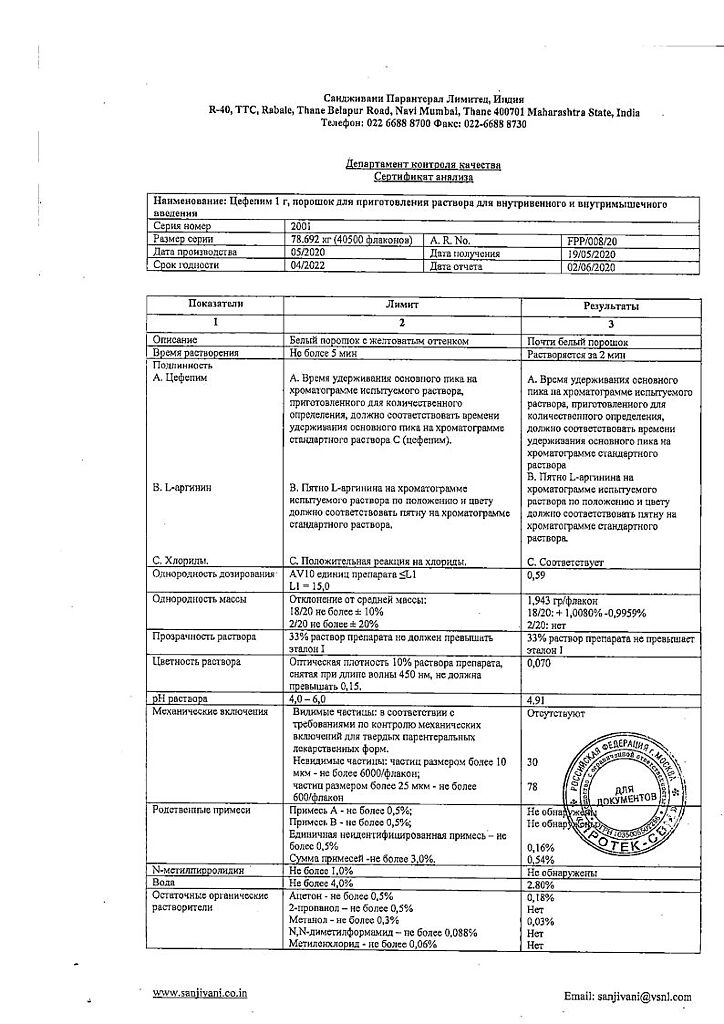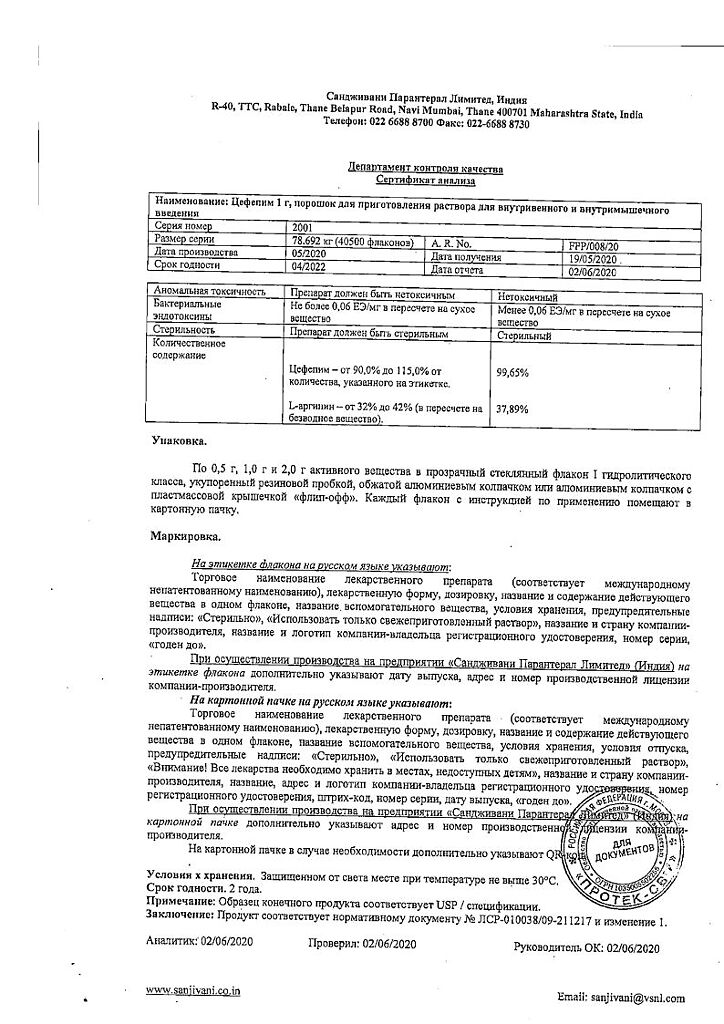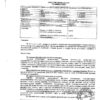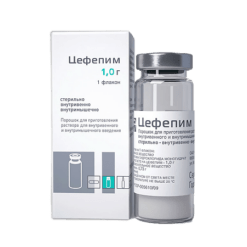No products in the cart.
Cefepim, 1 g
€1.00
Out of stock
(E-mail when Stock is available)
Description
A fourth generation cephalosporin antibiotic for parenteral use.
It has a bactericidal effect by disrupting the synthesis of the cell wall of microorganisms.
It is active against most gram-negative bacteria including those producing β-lactamases including Pseudomonas aeruginosa.
It is more active than III generation cephalosporins against Gram-positive cocci.
It is not active against Enterococcus spp., Listeria spp., Legionella spp., some anaerobic bacteria (Bacteroides fragilis, Clostridium difficile).
Cefepim is characterized by high stability against various plasmid and chromosomal β-lactamases.
Indications
Indications
Diseases caused by microorganisms sensitive to Cefipime:
Bronchitis of various etiologies.
Infection of the genitourinary system.
Infection of the skin and soft tissues.
Immunodeficiency diseases accompanied by infection.
Infections in gynecology.
Microbial meningitis, septicemia and bacteremia.
Pharmacological effect
Pharmacological effect
IV generation cephalosporin antibiotic for parenteral use.
It has a bactericidal effect, disrupting the synthesis of the cell wall of microorganisms.
Active against most gram-negative bacteria, incl. producing β-lactamases, including Pseudomonas aeruginosa.
More active than third generation cephalosporins against gram-positive cocci.
Not active against Enterococcus spp., Listeria spp., Legionella spp., some anaerobic bacteria (Bacteroides fragilis, Clostridium difficile).
Cefepime is characterized by high stability against various plasmid and chromosomal β-lactamases.
Special instructions
Special instructions
If an aerobic-anaerobic infection is suspected, before identifying the pathogen, it is recommended to additionally prescribe an antibacterial drug active against anaerobic microorganisms; drugs must be administered separately!
For patients in whom dissemination from the site of infection is possible and meningitis is suspected, an alternative antibiotic with clinically proven effectiveness in meningitis should be prescribed.
If pseudomembranous colitis develops, the drug is discontinued; moderate and severe forms of complications require the use of vancomycin or metronidazole.
Cross-hypersensitivity is possible in patients with allergic reactions to penicillins. If an allergic reaction occurs, stop using the drug; A severe immediate reaction may require administration of epinephrine, glucocorticoids, and other emergency measures.
In case of severe renal/liver failure, the concentration of the drug in the blood should be regularly monitored.
When treatment lasts more than 10 days, regular monitoring of blood counts and the functional state of the liver and kidneys is necessary.
Active ingredient
Active ingredient
Cefepime
Composition
Composition
Active substance:
cefepime hydrochloride (in terms of cefepime) -1.0 g.
Contraindications
Contraindications
If you are allergic to cephalosporins, penicillin, beta-lactam antibiotics, el-arginine.
This drug has not been properly tested on pregnant and lactating women; this group of patients uses treatment with this antibiotic only under the direct supervision of a doctor.
Side Effects
Side Effects
Cefipime is well tolerated.
Rarely: hepatitis, jaundice, colitis, bloating, nausea, allergic reaction, tachycardia, insomnia, dizziness, shortness of breath.
With intravenous administration, inflammation of the vessel tissue is very rarely observed.
Interaction
Interaction
Cefepime solution cannot be mixed with solutions of metronidazole, vancomycin, gentamicin, tobramycin, netilmicin, aminophylline. If necessary, these solutions are administered separately.
The drug solution can be added to the ampicillin solution if the concentration of each mixing solution does not exceed 40 mg/ml.
Diuretics, aminoglycosides and polymyxin B reduce the tubular secretion of cefepime, lengthen the half-life, and increase the concentration of the drug in the blood; increase nephrotoxicity.
Nonsteroidal anti-inflammatory drugs slow down the elimination of cephalosporins and increase the risk of bleeding.
When used simultaneously with aminoglycosides, it exhibits synergism, and with macrolides, chloramphenicol or tetracyclines – antagonism.
Overdose
Overdose
Occurs more often in patients with chronic renal failure.
Symptoms: convulsions, encephalopathy, neuromuscular agitation.
Treatment: for renal failure – hemodialysis; Close monitoring and supportive care for normal renal function.
Storage conditions
Storage conditions
In a place protected from light at a temperature not exceeding 30°C.
Shelf life
Shelf life
2 years.
Manufacturer
Manufacturer
Sanjeevani, India
Additional information
| Shelf life | 2 years. |
|---|---|
| Conditions of storage | In the light-protected place at a temperature not exceeding 30 ° C. |
| Manufacturer | Sanjivani, India |
| Medication form | Powder for preparation of solution |
| Brand | Sanjivani |
Other forms…
Related products
Buy Cefepim, 1 g with delivery to USA, UK, Europe and over 120 other countries.





















